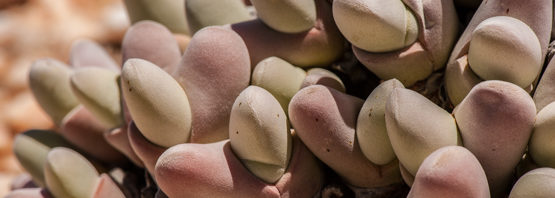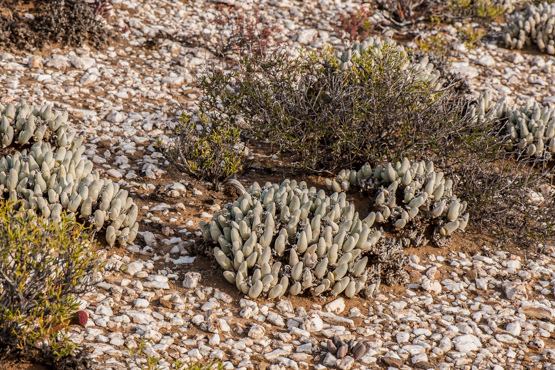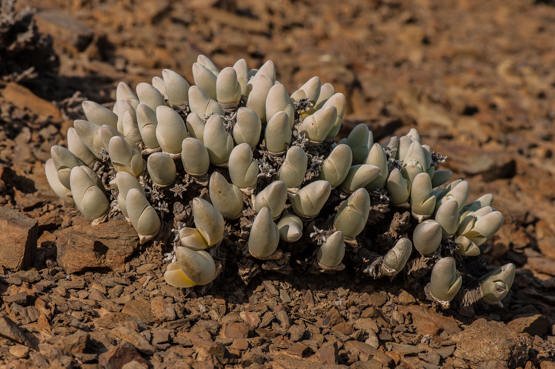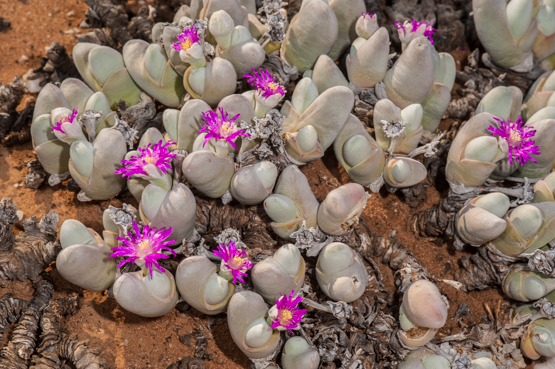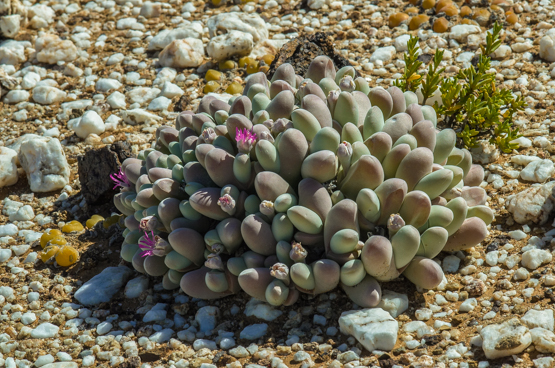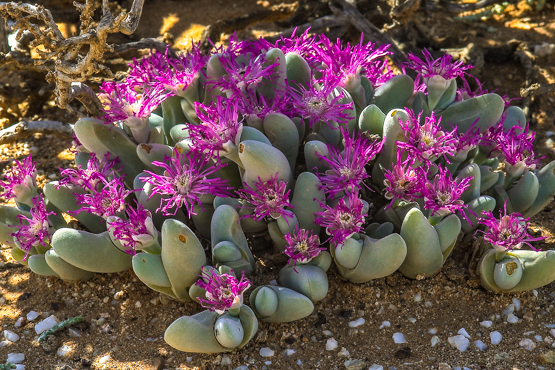These two species are closely related and often difficult to tell apart at first sight. In fact there is only one cast-iron distinguishing character.
In The Gibbaeum Handbook (1953), G.C. Nel wrote the following with regard to G. shandii:
” This species is related to, and resembles G. pubescens in its general appearance so much that one can only decide after examining the tomentose covering with a hand lens, whether it is G. pubescens or G. shandii. The tomentose covering of G. shandii consists of separate, stellately branched hairs and the underlying greenish epidermis can be seen between the hairs. With the naked eye, the hairy covering seems continuous. The thick tomentose covering of G. pubescens consists of minute simple hairs pointing downwards and closely adpressed to the epidermis, to such an extent that the underlying epidermis is entirely covered by them. These two species occur either together in the same patch or they may be separated, at times, by a short distance. Both these two species form large white greyish cushions of various sizes.”
He then ends his discussion of this species as follows:
“The description of G. pubescens is valid for that of G. shandii. The only important difference is in the nature of the tomentose covering.”
In the light of the above it is not surprising that in 1983, H. F. Glen decided to reduce the rank of these two species to subspecies (G. pubescens ssp. pubescens and G. pubescens ssp. shandii resp).
Both (sub)species occur in the area between Ladismith and Barrydale in the Little Karoo.
The five pictures of G. pubescens ssp. pubescens shown here were taken at the following dates:
1,2: 30 June 2013
3: 14 Sept. 2010
4,5: 26 Sept. 2006
